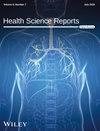Physical Activity and Psychological Health in Vitiligo Patients: A Cross-Sectional Study on Depression, Anxiety, and Stress
Abstract
Background and Aims
Vitiligo is a long-lasting depigmenting disorder that has a significant impact on people's emotional health but does not cause physical impairment. They deal with high levels of anxiety, depression, and stress. Physical activity (PA) is one of the potentially protective factors against psychological disorders, but its role in patients with vitiligo has not been evaluated before.
Methods
A cross-sectional study was conducted on 85 vitiligo patients aged ≥ 15. Participants with psychiatric comorbidities or physical limitations were excluded. The Depression, Anxiety, and Stress Scale (DASS-21) was used to measure psychological symptoms, and the International Physical Activity Questionnaire (IPAQ) was used to assess PA levels. Disease severity was assessed using the Vitiligo Area Scoring Index (VASI). The relationships between clinical/demographic characteristics, psychological symptoms, and PA were investigated.
Results
Psychologic distress was common, with 58% reporting stress, 55% depression, and 49% anxiety. The proportion of low, moderate, and high PA levels were 26%, 43%, and 31% respectively. No statistically significant association was found between PA levels and stress, anxiety, or depression. Anxiety scores was positively correlated with disease severity scores (r = 1.228, p = 0.04), and longer disease duration was associated with higher depression levels. PA levels were significantly higher among males (p = 0.02), but unrelated to most other demographic or clinical variables.
Conclusion
Although vitiligo cases experience considerable psychological distress, no protective effect of PA was found in this study for any of the mental health symptoms. The results indicate that psychological disorders in this group may need interventions more than general PA or life style changes and targeted psychological care or medications may be needed for this population. Larger and long-term studies are recommended to better assess PA's role in the psychological management of vitiligo.


 求助内容:
求助内容: 应助结果提醒方式:
应助结果提醒方式:


